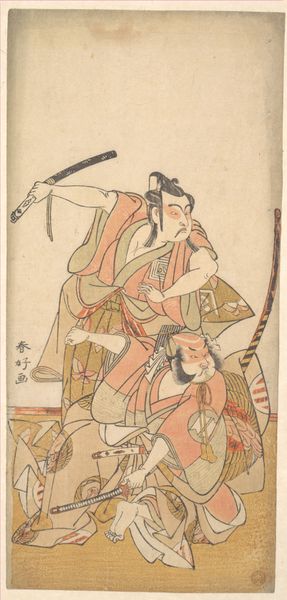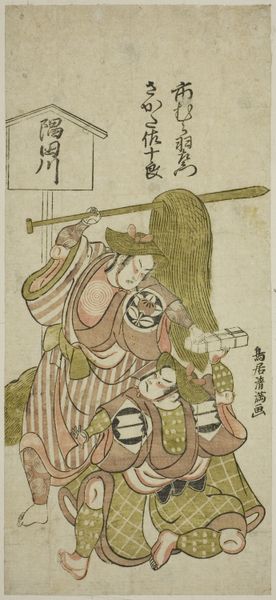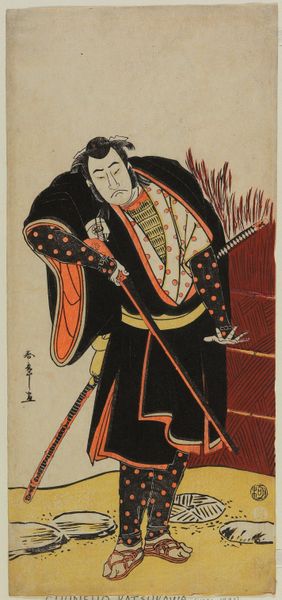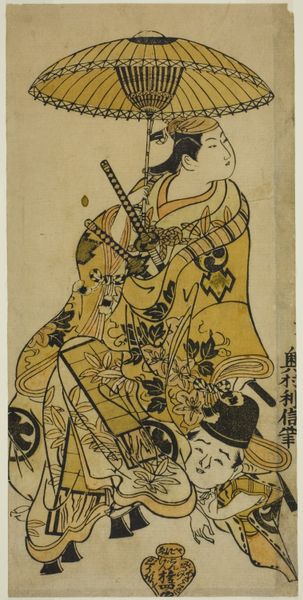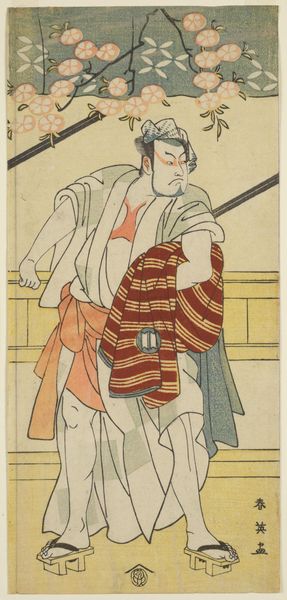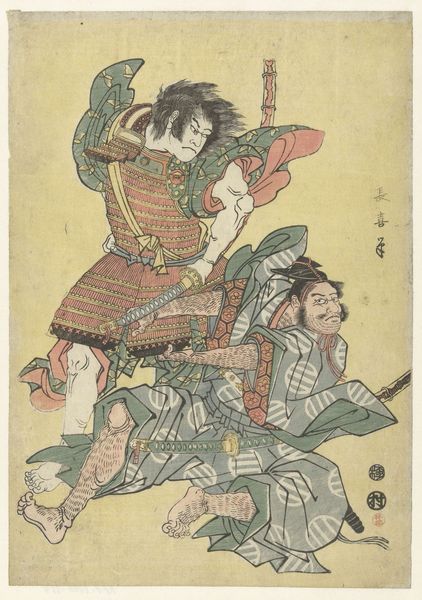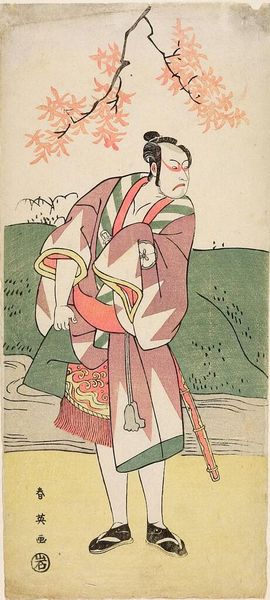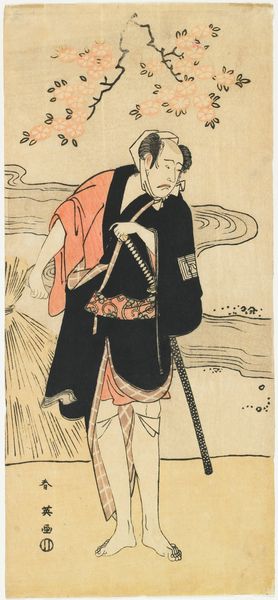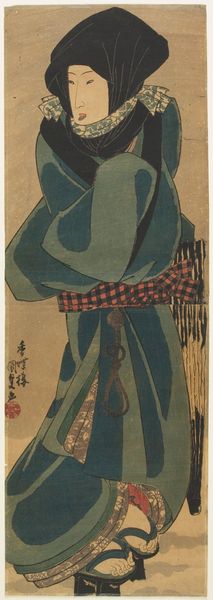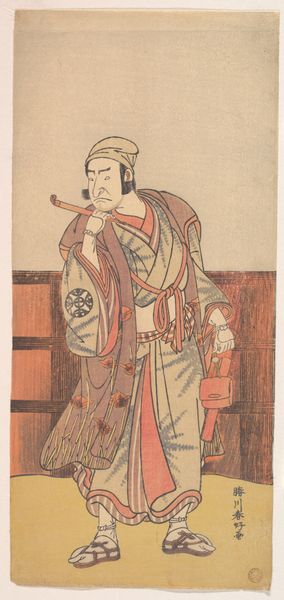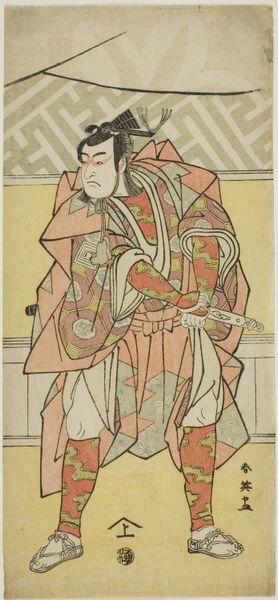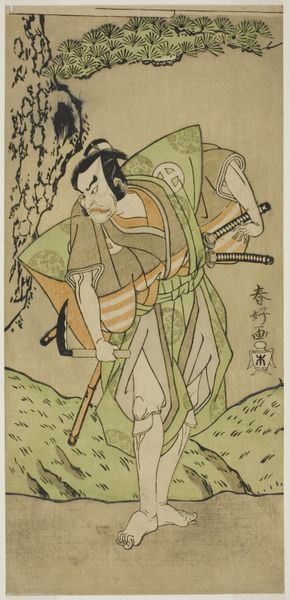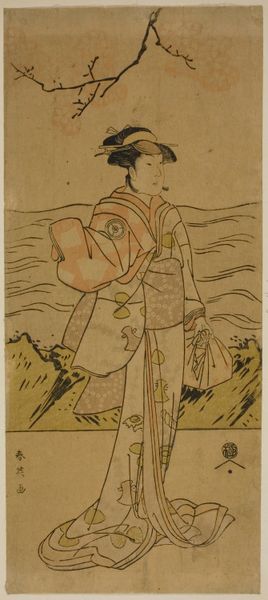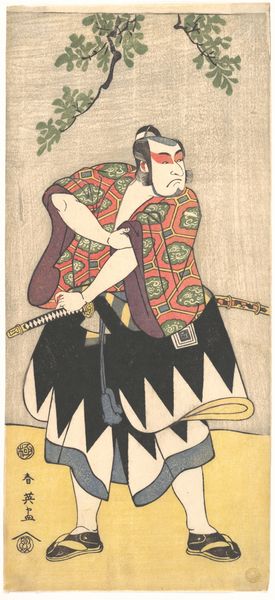
The Actor Ichikawa Omezo I as Kamei Rokuro Disguised as the Servant Dadahei in the Play Kimmenuki Genke no Kakutsuba, Performed at the Ichimura Theater in the Eleventh Month, 1791 c. 1791
0:00
0:00
print, woodblock-print
#
portrait
# print
#
asian-art
#
ukiyo-e
#
figuration
#
woodblock-print
Dimensions: 32 × 14.5 cm (12 5/8 × 5 11/16 in.)
Copyright: Public Domain
Katsukawa Shun'ei's woodblock print from 1791 depicts the actor Ichikawa Omezo I in the role of Kamei Rokuro, disguised as a servant, Dadahei. It provides a glimpse into the vibrant world of Japanese Kabuki theater, a space where gender roles are fluid, and social hierarchies are turned on their heads. During the Edo period in Japan, Kabuki was a popular, albeit controversial, form of entertainment. Often featuring stories of loyalty, revenge, and love, it served as a vehicle for social commentary and critique. In this print, the actor Ichikawa Omezo embodies a character who transcends his ascribed social role through disguise. What does it mean to perform a different identity? What are the emotional and psychological implications of ‘passing’ or ‘blending in’ to avoid detection? Shun’ei captures the tension and drama of this moment, inviting us to reflect on the complexities of identity, performance, and social mobility. It's a reminder that, both on and off the stage, identity is not always what it seems.
Comments
No comments
Be the first to comment and join the conversation on the ultimate creative platform.
